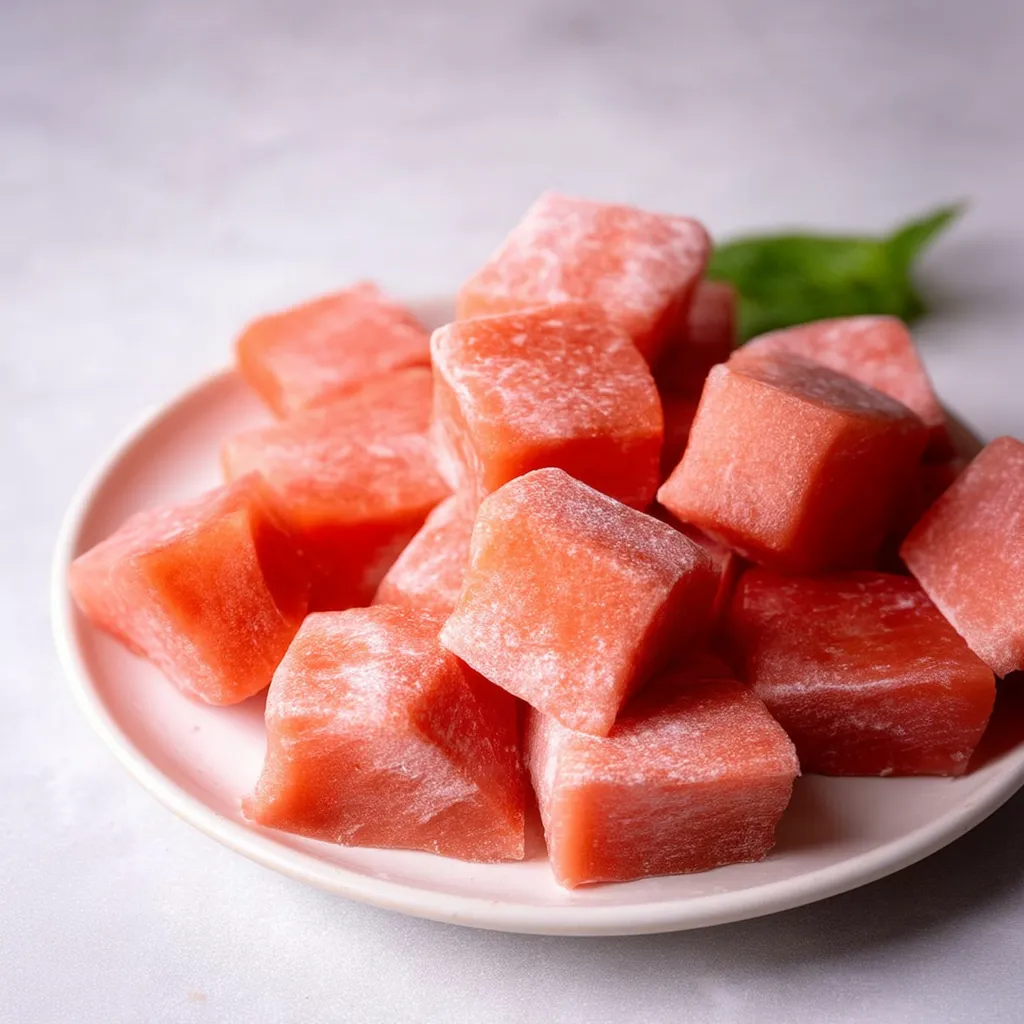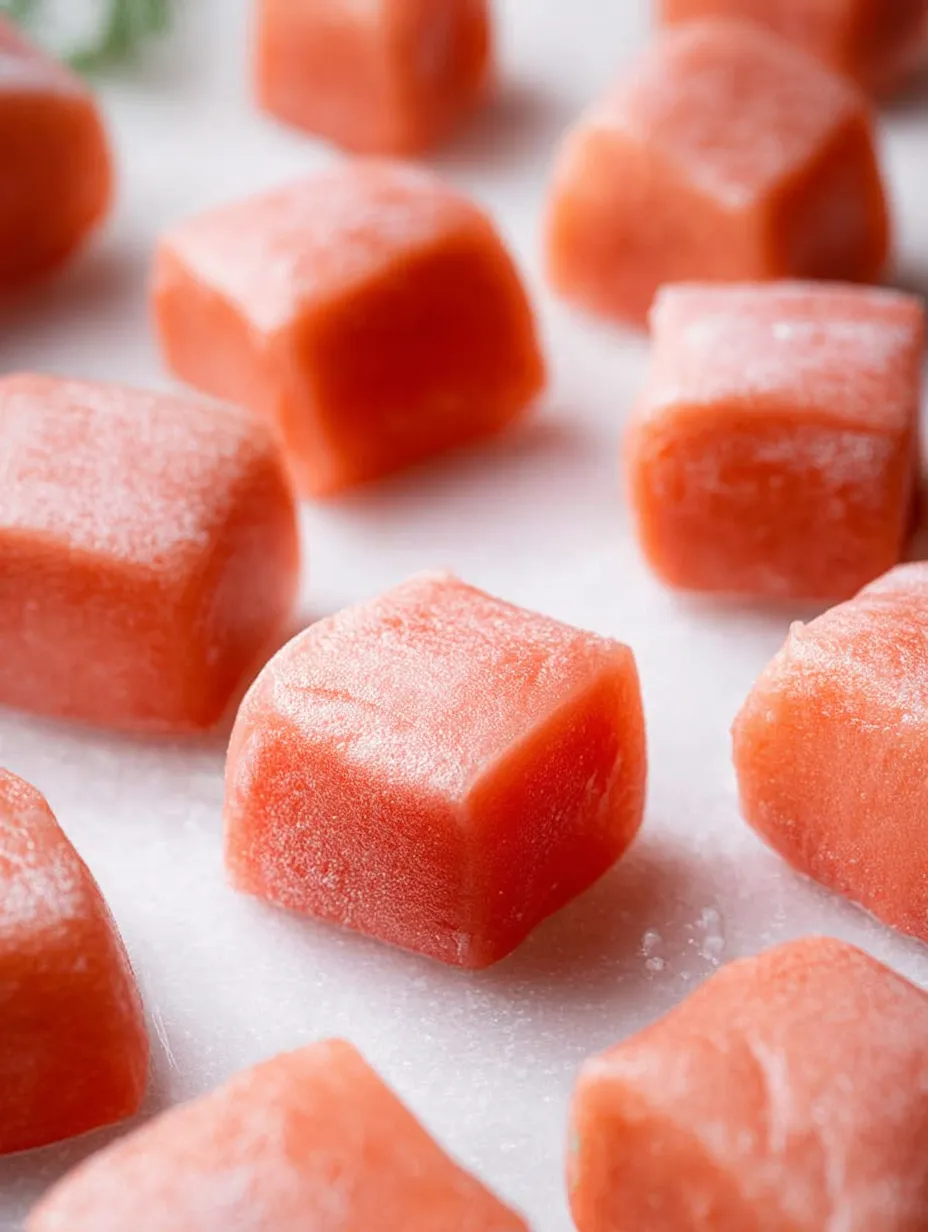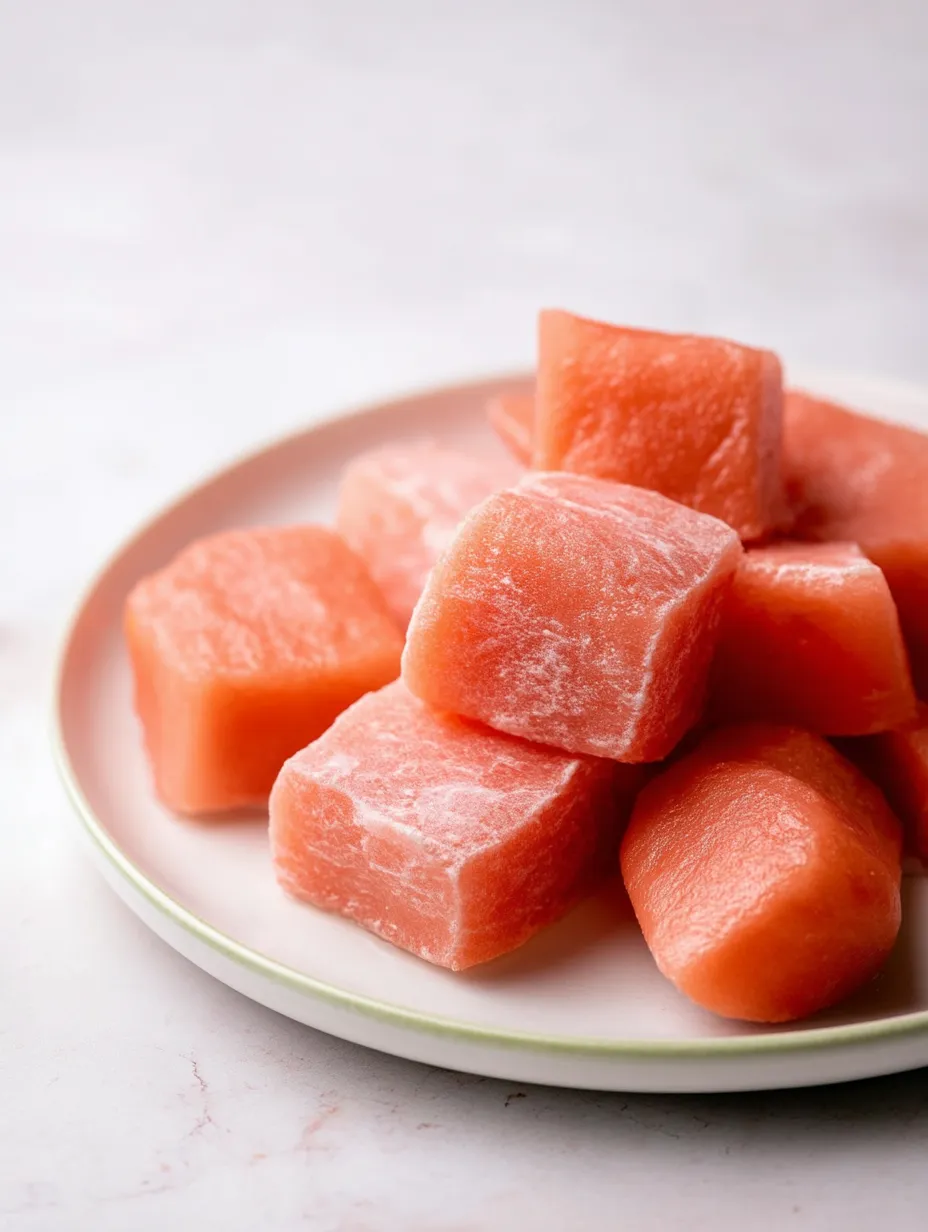 Pin it
Pin it
This cloudlike watermelon mochi brings summer's juicy goodness into a pillowy, soft Japanese-style sweet. These dainty squares get their stunning blush color and gentle taste from actual watermelon juice, creating a light after-dinner treat without any fake coloring.
I whipped these up during an especially scorching summer when we wanted something cool and light. The soft pink hue and tender texture turned out so wonderful that they've become our go-to summer treat whenever friends come over.
Ingredients
- Glutinous rice flour: Gives you that bouncy mochi chew while staying gluten free. The Asian market sells it as sweet rice flour - that's your best bet.
- Maple sugar: Brings natural sweetness without processed sugar. It pairs wonderfully with the watermelon flavor notes.
- Tapioca starch: Creates just the right texture and stops everything from getting too sticky.
- Fresh watermelon juice: Delivers the natural tint and taste. Make sure to strain it for smooth cooking.
- Avocado oil: Keeps things from sticking and adds a bit of richness. Go for something mild-tasting and good quality.
Step-by-Step Instructions
- Get Your Watermelon Juice Ready:
- Grab a ripe watermelon, dice it up and toss it in a blender until it's totally smooth. Pour it through a fine strainer to get rid of any seeds and pulp that might mess up your texture. Measure out exactly 3/4 cup for the best results.
- Mix Your Dry Stuff:
- In a big bowl, mix the glutinous rice flour, maple sugar, and tapioca starch until they're totally blended. Getting this base right means your mochi will have that perfect bounce all the way through.
- Whip Up Your Mix:
- Make a little hole in the middle of your dry ingredients, then pour in your watermelon juice and 1 tablespoon of avocado oil. Stir from the center out until you've got a smooth pink mixture with no clumps anywhere.
- Heat It Up:
- Warm the other tablespoon of avocado oil in a big non-stick pan on low-medium heat. Pour your mix in and keep stirring for about 3-4 minutes as it changes right in front of you. You'll see it get much thicker and turn a deeper pinkish-orange as it cooks.
- Form Your Dough:
- With lightly oiled hands, carefully scoop the hot sticky dough from the pan and roll it into a ball. Don't dawdle but be careful - this stuff is super hot!
- Make It Square:
- Put your mochi ball on parchment paper and use the paper to help shape it into an even square. The parchment stops it from sticking without needing loads of extra flour that would change how it feels in your mouth.
- Let It Chill:
- Put the parchment with your mochi square into a square container about 15cm across. Cover it with a proper lid, not just plastic wrap, so the top doesn't dry out, then pop it in the fridge for 1-2 hours until it's totally cool and firm.
- Slice It Up:
- Sprinkle both sides of your cooled mochi square with more glutinous rice flour. Use an oiled knife to cut it into 20 pieces, wiping the knife between cuts if needed.
- Finish And Enjoy:
- Roll each piece in more glutinous rice flour so they don't stick together, gently tapping off any extra. Put them on a plate and eat them right away for the best texture.
 Pin it
Pin it
The watermelon juice really makes this dish special. Getting the sweetest, ripest watermelon you can find totally changes both the color and taste. One time I tried these with a yellow heirloom watermelon and they turned out this gorgeous gold color but kept that same amazing texture.
Storage Tips
Mochi tastes best when it's fresh, but you can keep any extras in the fridge for up to two days if you use a container with a tight-fitting lid. Make sure it's completely sealed or your mochi will dry out and get hard fast. When you want to eat stored mochi, let it sit out for about 15 minutes and maybe add a bit more rice flour if it seems sticky.
Texture Troubleshooting
The most important part of making mochi happens during cooking. If your finished mochi feels too soft after cooling, you probably didn't cook it long enough. The mix should change color and get much thicker before you take it off the heat. On the flip side, if your mochi seems too firm or rubbery, you might have cooked it too long or used too much flour. Stirring constantly while cooking helps you get just the right amount of stretch and softness.
Flavor Variations
This watermelon version works great in summer, but you can use the same method with other fruit juices too. Try using strawberry puree, mango juice, or even blue butterfly pea tea for beautiful natural colors. You can also tuck small bits of fresh fruit inside each mochi for a surprise when you bite in. Just make sure to keep the amount of liquid the same so the texture turns out right.
 Pin it
Pin it
Frequently Asked Questions
- → What's the best way to make watermelon juice?
Puree chunks of watermelon in a blender until smooth, then strain through a fine sieve to remove pulp and seeds. Use 3/4 cup of the liquid for the mixture.
- → Can any other oil work besides avocado oil?
Sure! Grapeseed oil or a light olive oil will work just fine as a replacement for avocado oil.
- → What's the secret to handling mochi without it sticking?
Rub a little oil on your hands before touching the dough, and parchment paper can also make it easier to work with.
- → How long can I keep leftover mochi?
Keep it in an airtight box in the fridge for up to two days. Just remember, the texture might firm up a bit as it sits.
- → Why is rice flour sprinkled on top?
The rice flour keeps the pieces of mochi from clumping after cutting, so they’re easy to pick up and enjoy.
